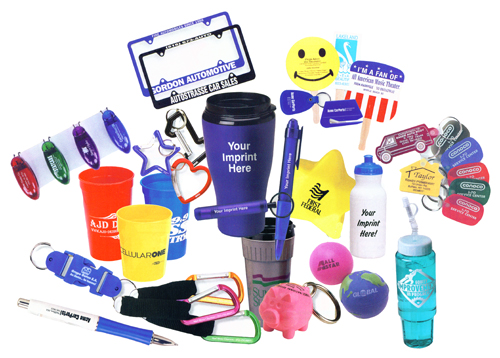“Most people have received corporate-branded swag before. Pens, water bottles, keychains, shirts—a lot of it ends up in the trash.
“Sonali Diddi, an associate professor at Colorado State University, focuses on sustainability and said corporate swag is far from environmentally friendly.
“They always end up—at the end of the meeting or back home—they’re just trashed,” Diddi said.
“The swag industry is estimated at roughly $20 billion, according to IBISWorld, a research and market report agency. Much of that merchandise ends up in the bottom of trash bins or sitting around the house. Certain products, such as branded tote bags, also have a strong negative environmental impact.
“Diddi decided to try and come up with a better way. For the 2023 Fashion and Circular Economy Symposium, she made attendees name tags from scratch.
“We did use scrap wood from our ‘makers lab’ at the Richardson Design Center,” Diddi said. “From there, we did the scrap wood, we lasered everybody’s names on it.”
“Part of her solution was not just to use sustainable materials, but to also remove branding from her swag items.
“We made it generalized with no affiliation, so people can reuse them at any other official or unofficial meetings or gatherings,” Diddi said.
“Diddi’s swag creations are also relatively cheap to make, and are made with sustainable materials like scrap wood and leftover CSU lanyards.
“Diddi tried a few other methods to make the event more sustainable. She used compostable plates and silverware, did away with print schedules, and insisted attendees bring their own water bottles.
“For employers who want to reward hard-working staff but leave less of an environmental footprint, Diddi recommends cutting the branding on giveaway items altogether so that they can be reused. She also said experiences tend to leave more of an impression on people than cheap water bottles,” (Simard, 2023)
Swag is a huge industry, and a cheaply made one. It is first and foremost a marketing tactic, used to increase brand recognition with employees as couriers. The products are never intended to last, in five years the brand will have updated their logo, the old swag will be irrelevant, and they will have ordered a new batch of cheap swag with the new logos plastered over every item.
Even the Ohio Department of Natural Resources is not exempt from this trend. At our first meeting to discuss sustainability we were greeted with swag bags full of stickers, plastic water bottles, and paper. Though I was grateful for their effort to be friendly, I couldn’t help but think to myself that this type of behavior counteracts and weakens their sustainability messaging. Shouldn’t they lead by example?
Perhaps the answer to ODNR’s waste issue shouldn’t be solved by one huge project. What if it was instead addressed in a bunch of small ways—like changing swag bags, or food waste collection within the office?
Small steps set a new foundation that can nudge people in the right direction long term. And though change may not be immediate, isn’t long-term success the most sustainable kind?
References
MemberClicks. (2013, August 19). Conference promotional items (on a budget) [Photograph]. MemberClicks Blog. https://memberclicks.com/blog/conference-promotional-items-on-a-budget/
“Promotional Products in the US – Market Size, Industry Analysis, Trends and Forecasts (2024-2029)”. https://www.ibisworld.com/united-states/market-research-reports/promotional-products-industry/#IndustryStatisticsAndTrends
Simard, D. (2023, July 14). The swag industry creates a lot of waste, but CSU professor sees an alternative. KUNC. https://www.kunc.org/news/2023-07-14/the-swag-industry-creates-a-lot-of-waste-but-csu-professor-sees-an-alternative




